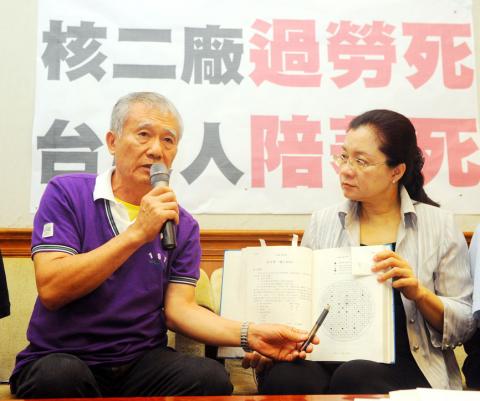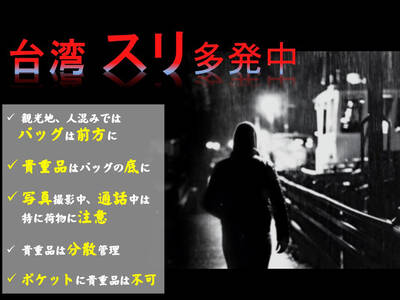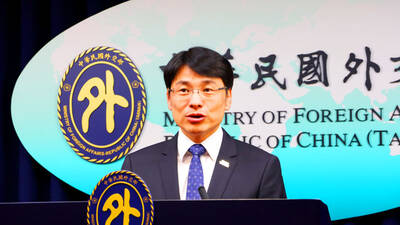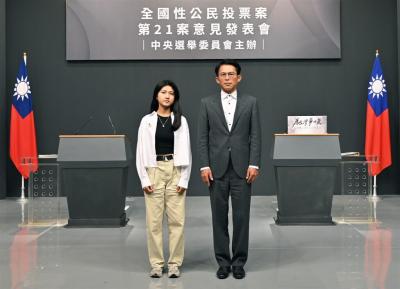Cracks of up to 30cm have been found on the core shroud of the No.1 reactor at the idled Guosheng Nuclear Power Plant in Wanli District (萬里), New Taipei City (新北市), an Atomic Energy Council official has confirmed.
Civic groups yesterday warned against reactivating the plant.
In addition to unsettled concerns about cracked anchor bolts at the reactor, Green Consumers Foundation chairman Jay Fang (方儉) revealed that two cracks were found on welded parts of the core shroud, which Fang said could lead to disaster if the reactor is reactivated without repairs.

Photo: Wang Min-wei, Taipei Times
Deputy Director of the Atomic Energy Council’s (AEC) Department of Nuclear Regulation Chen Yi-pin (陳宜彬) was quoted by the Chinese-language Liberty Times (the Taipei Times’ sister newspaper) yesterday as having confirmed on Sunday that the two long cracks were discovered during routine checkup and maintenance in March.
The core shroud is a large cylinder of circumferentially welded plates made of stainless steel, surrounding the reactor fuel core, which is composed of fuel rods assembled into bundles.
According to Chen, the cracks at the core shroud’s weld bead are located near where the most neutrons are emitted in the reactor core, and embrittlement of the weld bead is a result of stress corrosion from neutron exposure, adding that “it is a common problem of boiling-water reactors that has been known for over 20 years.”
Chen was also quoted as saying that cracks of 20cm were found at the first reactor six years ago and that even if holes were found on the core shroud, it would only affect the thermal efficiency as long as the reactor is still intact.
Lee Kuei-lin (李桂林), a retired Taiwan Power Co (Taipower) employee who had worked at the plant for 33 years, told a press conference yesterday that the Guosheng Nuclear Power Plant had had many instances of sudden emergency shut-downs and the thermal effect from a sudden drop in temperature from 300oC in the reactor core may be the real cause of the cracks.
As the top guide and core plate, which are welded onto the shroud, provide horizontal support for the fuel assemblies, the core shroud cracking may lead to instability or displacement of the guide and the plate, resulting in the misalignment of the fuel bundles, he said.
He added that control rods cannot be inserted between the fuel bundles if they are slightly misaligned, so a critical problem that could arise would be the loss of fuel core cooling capability.
The worst-case scenario that could, in turn, result from the inability to insert controls rods would be a core meltdown, he warned.
Democratic Progressive Party Legislator Tien Chiu-chin (田秋堇) said core shroud cracking was identified at Germany’s Wuergassen reactor (which, like the Guosheng No. 1 reactor, was also designed by General Electric Co) in 1994, and the cost of replacement was estimated at US$65 million, but the German government decided to retire the plant instead.
Similar cases of core shroud cracking were reported at many reactors in Japan in 2002, including the three reactors that had gone into meltdown at the Fukushima Dai-ichi nuclear plant last year, Green Citizens’ Action Alliance board member Lai Wei-Chieh (賴偉傑) said, adding that although the power shortage caused by the tsunami and earthquake were blamed for the accident, the possible impacts caused by the cracks should also be explored.
The groups urged the council not to allow Taipower to reactivate the reactor and put the lives of all the people living in greater Taipei under the threat of nuclear disaster.
In response, the AEC said in a press release yesterday evening that it has approved Taipower’s safety evaluation report on reactivating the first reactor after repairing the broken anchor bolts. It promised to monitor the crack or abnormal tremors of the reactor in the future and said the reactor can operate safely for another 18 months..

The Japan-Taiwan Exchange Association has cautioned Japanese travelers to be vigilant against pickpockets at several popular tourist spots in Taiwan, including Taipei’s night markets, the Yongkang Street area, Zhongshan MRT Station, and Jiufen (九份) in New Taipei City. The advisory, titled “Recent Development of Concerns,” was posted on the association’s Web site under its safety and emergency report section. It urges travelers to keep backpacks fully zipped and carried in front, with valuables placed at the bottom of the bag. Visitors are advised to be especially mindful of their belongings when taking photos or speaking on the phone, avoid storing wallets and

ENDORSING TAIWAN: Honduran presidential candidate Nasry Afura said that Honduras was ‘100 times better off’ when it was allied with Taipei The Ministry of Foreign Affairs yesterday said it would explore the possibility of restoring diplomatic relations with Honduras based on the principle of maintaining national interests and dignity. The ministry made the remarks in response to reporters’ questions regarding an article titled: “Will Taiwan Regain a Diplomatic Ally?” published in The Diplomat on Saturday. The article said Honduras’ presidential election in November could offer Taiwan the chance to regain an ally, as multiple candidates have promoted re-establishing diplomatic relations with Taiwan. Honduras severed diplomatic ties with Taiwan in March 2023 in favor of Beijing, but since switching its diplomatic recognition,

A fourth public debate was held today about restarting the recently decommissioned Ma-anshan Nuclear Power Plant, ahead of a referendum on the controversial issue to be held in less than two weeks. A referendum on Aug. 23 is to ask voters if they agree that “the Ma-anshan Nuclear Power Plant should continue operations upon approval by the competent authority and confirmation that there are no safety concerns.” Anyone over 18 years of age can vote in the referendum. The vote comes just three months after its final reactor shut down, officially making Taiwan nuclear-free. Taiwan People’s Party Chairman Huang Kuo-chang (黃國昌) represented

Scoot announced yesterday that starting in October, it would increase flights between Taipei and Japan’s Narita airport and Hokkaido, and between Singapore and Taipei. The low-cost airline, a subsidiary of Singapore Airlines, also said it would launch flights to Chiang Rai in Thailand, Okinawa and Tokyo’s Haneda airport between December and March next year. Flights between Singapore and Chiang Rai would begin on Jan. 1, with five flights per week operated by an Embraer E190-E2 aircraft, Scoot said. Flights between Singapore and Okinawa would begin on Dec. 15, with three flights per week operated by Airbus A320 aircraft, the airline said. Services between Singapore